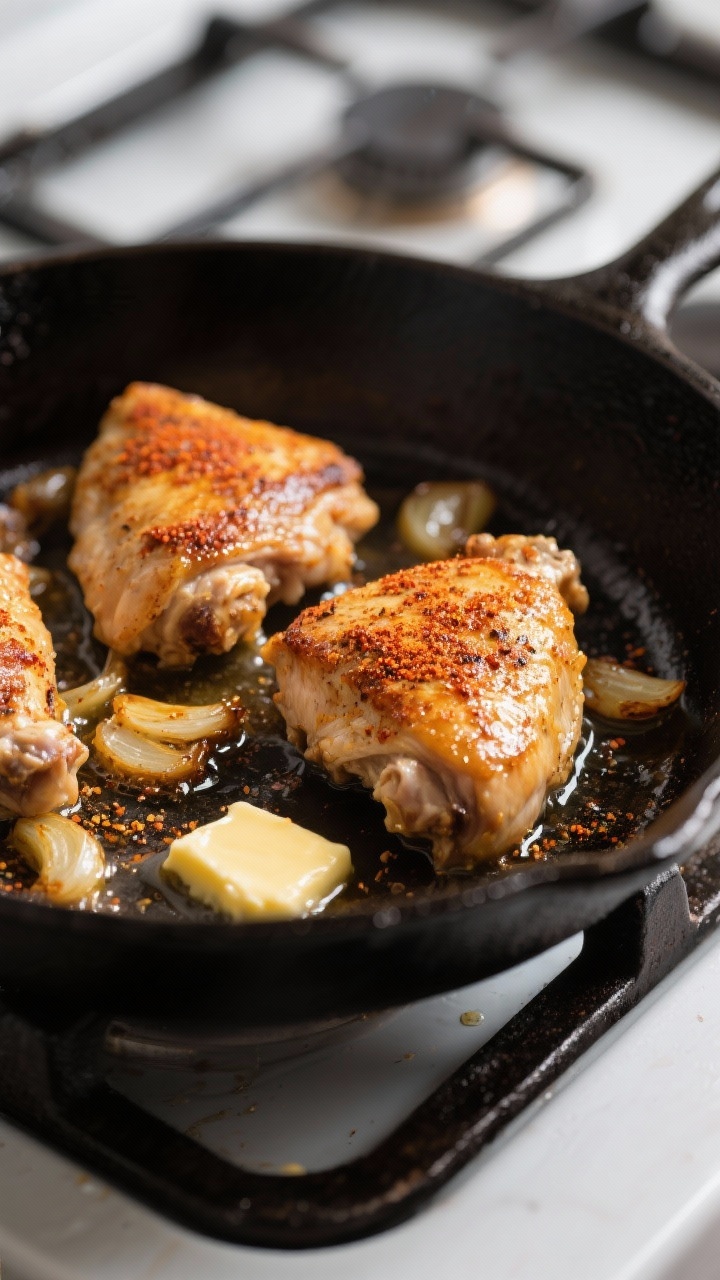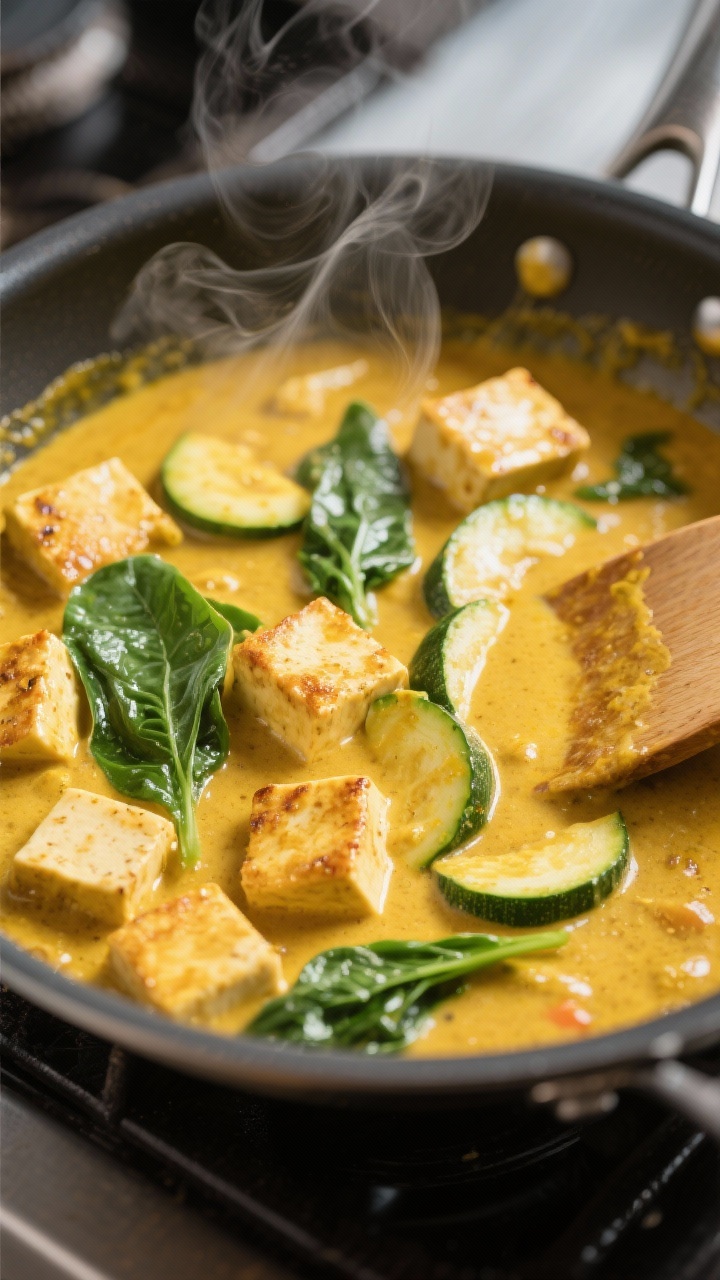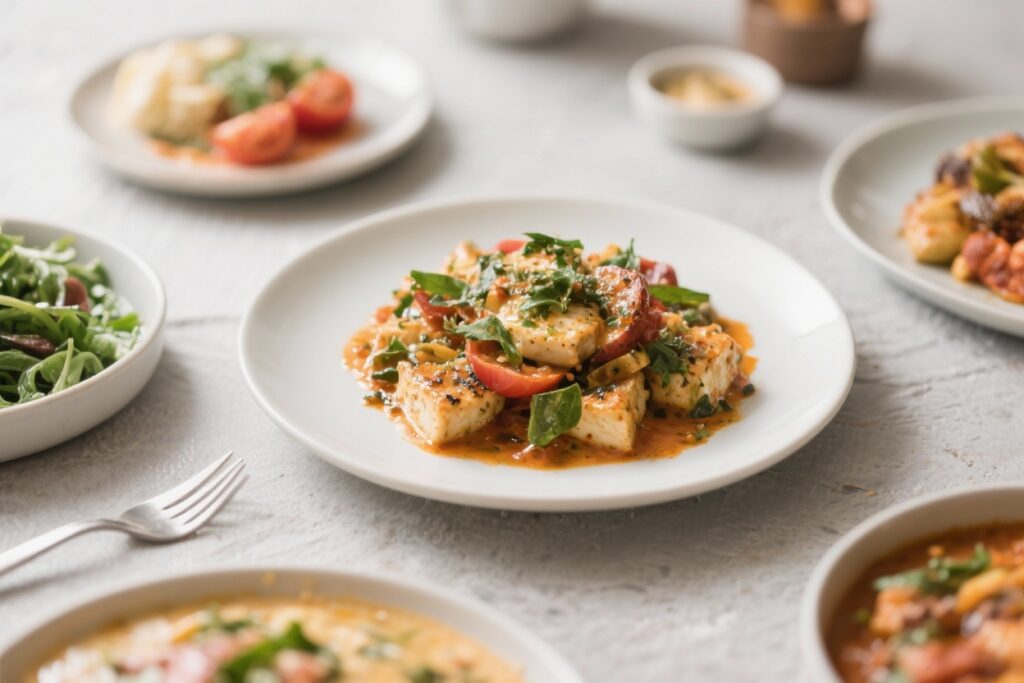You know that 6 p.m. panic when hunger hits and your ambition calls in sick? This is your exit strategy. These easy dinner recipes punch above their weight: fast, flavorful, and friendly to the “I only have five things in my fridge” crowd.
No culinary school needed, no sink full of dishes, no shame. If you can stir, season, and set a timer, you’ll eat like a weeknight hero and still have energy to watch something you’ll pretend not to binge.
What Makes This Special

These recipes are built on a few principles: one pan whenever possible, maximum flavor from minimal ingredients, and flexibility. You can swap proteins, toss in leftover veggies, and still get something restaurant-adjacent.
We focus on smart “flavor multipliers” like garlic, citrus, soy, and herbs that do the heavy lifting so you don’t have to. Another trick? Textures.
Crisp edges, juicy centers, creamy sauces—everything plays together. And the timing is stacked so you’re not babysitting three things at once. You’ll prep while something roasts or simmers, shaving minutes like a pro.
What Goes Into This Recipe – Ingredients
- Protein: 1 lb chicken thighs or breasts, shrimp, tofu, or canned chickpeas
- Base carbs: 8 oz pasta or 2 cups cooked rice or tortillas (for bowls or wraps)
- Vegetables: 2 cups mixed veggies (broccoli, bell peppers, cherry tomatoes, spinach, zucchini, or frozen veg)
- Aromatics: 3 cloves garlic (minced), 1 small onion or 2 scallions (chopped)
- Flavor boosters: 2 tbsp olive oil, 1 tbsp butter (optional), 1–2 tbsp soy sauce or tamari, 1 tsp smoked paprika, 1 tsp dried oregano, 1 tsp ground cumin
- Acidity: 1 lemon or lime (zest and juice) or 1 tbsp balsamic vinegar
- Creamy element (optional): 1/3 cup Greek yogurt, cream, or coconut milk
- Heat: Red pepper flakes or hot sauce to taste
- Freshness: Small bunch parsley, cilantro, or basil
- Salt and pepper: To taste
- Garnish (optional but elite): Grated Parmesan, toasted nuts, or sesame seeds
Instructions

- Pick your path: Choose your protein and base (pasta, rice, or tortillas).
If using pasta, start boiling salted water now. If using rice, reheat cooked rice or use microwavable packs for speed.
- Prep fast: Chop veggies into bite-size pieces. Mince garlic, slice onion/scallions.
Zest and juice your lemon or lime. Rinse canned chickpeas if using.
- Season smart: Toss your protein with 1 tbsp olive oil, salt, pepper, smoked paprika, and cumin. For tofu, pat dry first.
For shrimp, just a quick toss—no long marinating needed.
- Sear the star: Heat a large skillet over medium-high. Add 1 tbsp oil. Cook protein until browned and cooked through (chicken 5–7 minutes, shrimp 2–3 minutes, tofu 6–8 minutes, chickpeas 4–5 minutes).
Remove to a plate.
- Build the base: In the same pan, add butter (if using). Sauté onion 2 minutes, then add garlic 30 seconds until fragrant (aka you’re now a chef).
- Veg time: Add veggies. Cook until crisp-tender, about 3–5 minutes.
Season with salt, pepper, and oregano. If pan gets dry, splash water to steam and soften.
- Sauce it up: Stir in soy sauce and citrus juice. For creamy version, add yogurt, cream, or coconut milk now.
Simmer 1–2 minutes to thicken slightly. Adjust with water if too thick.
- Reunite the band: Return protein to pan. Toss with sauce and veggies.
Add red pepper flakes for heat. Taste and tweak—more salt? More acid?
A little butter for shine? Up to you.
- Combine with base: Drain pasta and toss directly into the skillet, or spoon the mix over rice/tortillas. Add lemon zest and herbs.
Finish with Parmesan, sesame, or toasted nuts for crunch.
- Serve hot: Plate it like you meant to. Snap a pic if it boosts morale. Eat while it’s still steamy.
Keeping It Fresh
Keep leftovers in an airtight container for 3–4 days.
Store sauce and base separately when possible so pasta stays bouncy and rice doesn’t get gummy. Reheat gently on the stovetop with a splash of water or broth to revive the sauce. If you used seafood, aim to eat within 2 days.
Herbs wilt fast—add fresh ones after reheating. And yes, you can freeze it: skip dairy if freezing, and add it after thawing. Frozen portions reheat best in a covered skillet.

What’s Great About This
- Speed without sad flavor: Every step stacks flavor; you’re not just microwaving feelings.
- One-pan friendly: Less cleanup, more couch time.
- Flexible and forgiving: Swap proteins, change veggies, keep winning.
- Budget-smart: Pantry staples do the heavy lifting.
Fresh herbs are optional, not mandatory.
- Balanced: Protein, fiber, good fats, and acid for that “Why does this taste so good?” moment.
Common Mistakes to Avoid
- Overcrowding the pan: Steaming instead of searing kills flavor. Cook in batches if needed.
- Skipping salt at the start: Seasoning just at the end tastes flat. Layer salt lightly, then adjust.
- Overcooking protein: Dry chicken and rubbery shrimp are not the vibe.
Pull them early; carryover heat helps.
- Forgetting acid: A squeeze of lemon or splash of vinegar wakes everything up. Don’t skip it.
- Adding dairy too hot: Yogurt can split if boiling. Lower the heat, then stir it in.
Recipe Variations
- Garlic-Lemon Chicken Orzo: Swap pasta for orzo, add spinach and cherry tomatoes, finish with feta and dill.
- Spicy Shrimp Rice Bowl: Use shrimp, broccoli, and bell peppers; add chili crisp and a drizzle of lime.
Top with a jammy egg if you’re feeling fancy.
- Creamy Coconut Tofu Curry: Use tofu, zucchini, and spinach; replace soy with a splash of fish sauce (or extra soy) and add curry powder. Serve over rice.
- Smoky Chickpea Skillet: Chickpeas, onions, tomatoes, cumin, and paprika; finish with yogurt and cilantro. Scoop with warm tortillas.
- Peppery Steak Pasta (IMO elite): Thin-sliced steak, mushrooms, black pepper, butter, and Parmesan.
Hit with balsamic at the end.
FAQ
Can I make this vegetarian?
Absolutely. Use tofu, tempeh, or chickpeas. Add extra veggies for volume and texture, and lean on soy, garlic, and citrus for depth.
A sprinkle of nuts or seeds adds protein and crunch.
What if I only have frozen vegetables?
No problem. Cook them straight from frozen over medium-high heat so they don’t get soggy. Let the water evaporate, then season and proceed.
Frozen peas and spinach are secret weapons.
How do I make it dairy-free?
Use olive oil and skip butter. Swap yogurt or cream with coconut milk or a dairy-free plain yogurt. Keep the heat moderate to avoid curdling.
How can I add more protein without cooking more meat?
Stir in canned beans, edamame, or lentils.
Toss with toasted nuts or seeds. If using pasta, choose a legume-based variety for extra protein.
What pan should I use?
A large nonstick or stainless skillet works. Cast iron gives great sear but watch acidity with long simmering.
The main rule: wide pan, hot surface, don’t crowd.
How do I make it kid-friendly?
Dial back the heat, add a little honey, and keep veggies familiar (peas, carrots). Serve components separately if needed—same meal, less drama.
Can I meal prep this?
Yes. Prep proteins and chopped veggies ahead, cook starch in bulk, and mix fresh each night.
Or assemble complete portions and reheat with a splash of water.
My Take
Weeknight dinners don’t need a plot twist. A hot pan, a few flavor bombs, and the discipline to squeeze a lemon can outpace takeout and save your budget. Keep a short list of staples, trust high heat, and don’t be shy with herbs and acid.
The win isn’t just dinner—it’s momentum. Cook once, feel capable, repeat tomorrow.

Printable Recipe Card
Want just the essential recipe details without scrolling through the article? Get our printable recipe card with just the ingredients and instructions.

